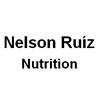How should we evaluate soybean meal quality?
Ureatic activity and protein solubility in KOH of soybean meal samples obtained in poultry feed mills


Burnham, L.L. et al. Effects of sodium sulfate and extrusion on the nutritional value of soybean products for nursery pigs. Asian- Aust. J.Anim.Sci., 13:1584-1592, 2000.
Liener, I.E. Implications of antinutritional components in soybean foods. CRC Critical Reviews in Food Science and Nutrition, 34(1):31-67, 1994.
LIMA, M.R. et al. Atividade ureática. Rev. Eletr. Nutrit., 145(5)1606-1611, 2011.
SERRANO, M.P. et al. Influence of feed form and source of soybean meal of the diet on growth performance of broilers from 1 to 42 days of age. 1. Floor pen study, Poultry Science, 91(11):2838–2844, 2011 https://doi.org/10.3382/ps.2012-02371


Dear Luis,
in the last few years, we had a close look at the quality of different protein-rich feed ingredients and we developed NIR calibrations which can now be used locally to estimate the quality. The reactive Lys to Lys ratio is a good indicator for over-processing and it works in Soybean products, but also in Canola Meal and DDGS. In Canola it might be worth to check in addition the levels of Glucosinolates and Erucic acid. It should be low, but it's better to check it.
All the best,
Markus

Dear friends
thanks for the discussion, I am very impressed with the quality of the information. Recently, we have tested different soybean meals available in our region, and it was possible to see this difference including AME, AMEn and other digestibility variables. This makes very important the information presented by Dr. Ruiz. This makes me more interested in continuing the studies about soybean meal quality.
Prof. José Henrique Stringhini (UFG, Brazil).


North American Renderers Association (NARA)
As always Dr. Nelson Ruiz is very clear in his explanation of methods on how to measure SBM at industrial process. By the way, I do not think that a very short time ( less than 14 seconds ) in the conditioner before pelleting could affect protein solubility.
As always Dr. Nelson Ruiz is very clear in his explanation about SBM and how to measure correct industrial process. By the way a very short time about 14 seconds resident in the conditioner (before pelleting) is unlike to affect solubility of the protein. Alfredo Irazusta , Alinat SRL. Argentina.
Gentlemen, thanks for the excellent discussion.
Going deeper, the KOH solubility evaluation is based on how much the protein was exposed to a Maillard reaction. Urease activity is an indirect analysis of how protease has been affected in the thermal treatment. Reading the comments seems to be correlated, but are different evaluations, or not?
Regarding the Maillard reaction, how much the protein fraction of feed could be impacted by an expander before pelleting, could it be a relevant issue?

Dear Dr. Stringhini et al., in my assessment your data on soybean meal quality are very interesting. Based on our experience, and considering also several reports in the scientific literature, the range of adequacy for KOH protein solubility in soybean meal is in the range of 80-85%. Your data based on the analysis of 283 samples from the commercial reality show that 52.64% of the samples or 189 out of 283 analyzed are exactly in the range 80-85%. On the other hand, 68.64% of the samples or 210 out of 279 analyzed displayed a urease activity at or below 0.05 pH units. Since 2012 (Ruiz, New insights on the urease activity range for soybean meal: A worldwide opportunity for the poultry industry. Arkansas Nutrition Conference) we have demonstrated that for solvent-extracted soybean meal (not for full-fat soybeans) the urease activity range consistent with tolerable levels of trypsin inhibitors for broiler chickens is the range 0.000-0.050 pH units. It is likely that the 36.39% of the analyzed samples that resulted in KOH protein solubility above 85.1% may somehow correspond with the 30.74% of the analyzed samples that displayed urease activity above 0.05 pH units. All these comments are, of course, approximations. Now, it is important to realize that there is also 10.95% of the samples that tested below 80.0% KOH protein solubility which may eventually be compromised as overprocessed (defining "overprocessed soybean meal" as containing less than 88% in vivo digestible lysine). Therefore, all in all, in my assessment 52.64% of the samples most likely are within the estimated adequate specs of 80-85% KOH protein solubility AND less than 0.05 pH units of urease activity (which in turn means being in the range of approx. 1.65-2.35 mg of trypsin inhibitors/g, or approx. 3.0-4.0 TIU/mg) assuming that the 52.64% from the KOH solubility evaluation is contained within the 68.64% of urease activity values below 0.05 pH units. For practical purposes this show the importance of ADJUSTING FORMULATION for specific soybean meal lots correctly evaluated for their quality parameters within the concept of precise nutrition. Nelson Ruiz Nutrition, LLC, Suwanee, GA, USA.


E.S.E. & INTEC















